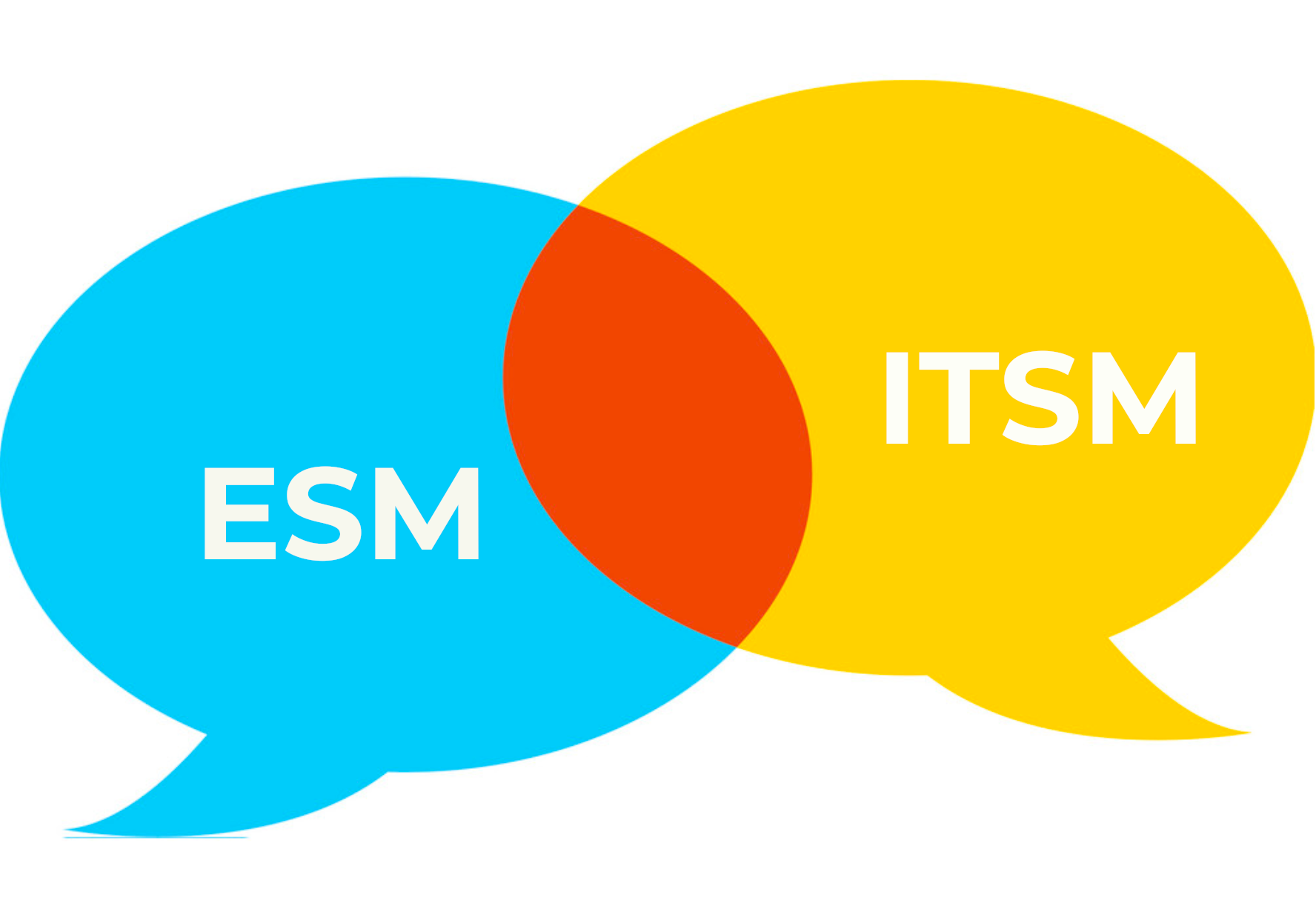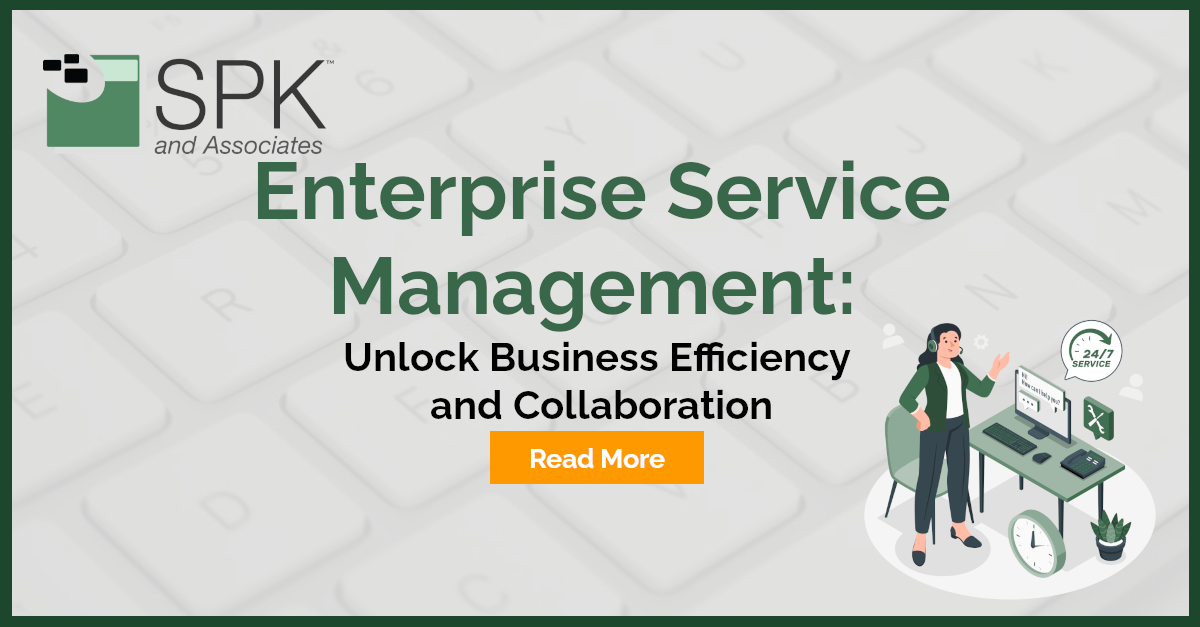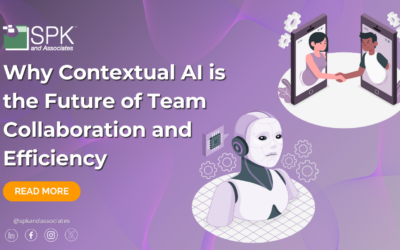IT Service Management (ITSM) does more than just offer IT support. At SPK and Associates, we see it as a key to delivering seamless IT services from start to finish. Because technology is at the heart of every business team today, ITSM supports various technologies and technical processes in the workplace. Yet, it doesn’t stop there. Rather than imposing a rigid, one-size-fits-all solution, ITSM tools like Jira are designed to adapt and align with the distinct needs of different teams. In fact, at SPK, we integrate frameworks like the IT Infrastructure Library (ITIL) for our clients because it helps departments utilize ITSM effectively. Additionally, it enables them to create thorough and effective Enterprise Service Management (ESM) strategies.
Here’s a quick overview of how you can use enterprise service management to unlock efficiency and collaboration.
ESM vs. ITSM: Unlocking Efficiency and Collaboration
Firstly, ITSM and ESM are related but distinct concepts.
While ITSM focuses on IT-related services, ESM extends these practices across the organization. And ESM does more than simply adopt ITSM methods. Instead, it leverages PaaS/low-code development tooling to foster innovation and workflow automation.
However, it’s not about ITSM versus ESM, but rather a combination of both. In fact, ESM inherits ITSM’s benefits and applies them to other business use cases, breaking down silos and generating greater value.

Implementing ESM: Building Upon Successful ITSM
The transition from IT Service Management (ITSM) to Enterprise Service Management (ESM) is a strategic evolution. While ITSM focuses on the delivery and support of IT services within an organization, ESM expands these practices across various departments. This broader approach leverages the principles and successes of ITSM, applying them to non-IT departments like HR, marketing, and finance.
Because ITSM is often well-established within an organization, its methodologies, tools, and strategies can be adapted to different team needs, fostering a more efficient and collaborative work environment. This shift from IT-centric services to a company-wide management strategy helps in breaking down silos and creating a more unified organizational landscape. By incorporating ESM, businesses are better positioned to streamline processes, enhance collaboration between teams, and deliver more effective services across the entire organization.
Bringing ESM Practices to Various Departments: Unlocking Efficiency and Collaboration
- HR: ITSM tools and principles allow HR to better connect disjointed tools, making hiring new talent faster. For example, HR can streamline onboarding by implementing ESM solutions. And, by integrating Workday HRIS with Jira Service Management, the collaboration between HR and IT can be strengthened. This allowed automatic triggers for tasks like laptop provisioning and account setup for new employees.
- Marketing: By mingling ITSM with marketing, it improves visibility, helping new products reach the market faster. For example, our own marketing team uses Jira and Trello to effectively manage campaigns. And, we’re not the only ones! These tools enable task assignment and milestone tracking easily. Plus, this centralization fosters collaboration across departments, implements change management, and streamlines processes. Consequently, it achieves faster publication timelines, maintains clarity, and minimizes delays.
- Legal: Even in historically less agile departments, ITSM principles enable organizations to evolve and stay competitive. For example, streamlining communication and improving efficiency in legal departments minimizes risks and enhances the experience for all stakeholders. Confluence can be a great tool for legal teams relying on repositories of information and quick reference points.
- Finance: Utilizing ITSM tools like Jira Service Management can standardize communications, increase visibility, and connect processes. By centralizing information and using frameworks like ITIL V3’s Financial Management, these departments can track data, support decision-making, and ensure accountability. This approach streamlines operations, improves efficiency, and enhances reporting accuracy.
Conclusion
At SPK, we believe in empowering businesses with the best ITSM and ESM. But what does this mean for your organization? You get customized strategies, efficient collaboration, and solutions that flex with your needs. Plus, as an Atlassian Gold Solution partner, we’ve helped businesses all over the world maximize their ITSM and ESM processes.
Curious to know how SPK can take your business to the next level?






